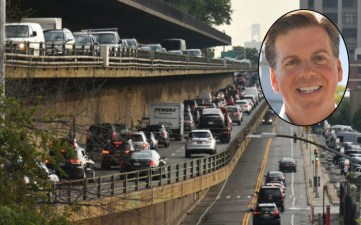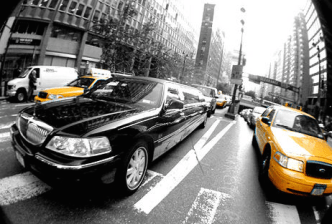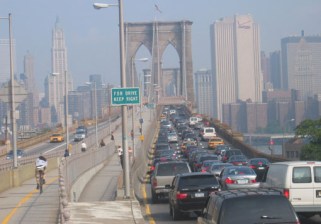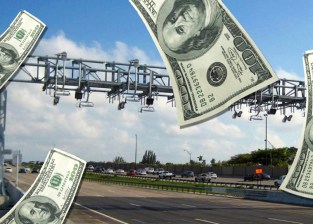A Better Taxi Surcharge: More Congestion Reduction, Less Pain for Cab Drivers
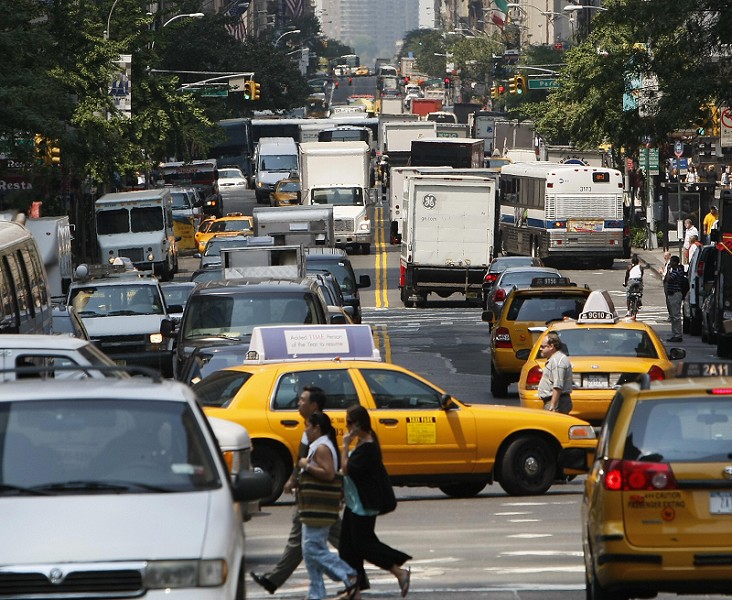
The Albany budget bill snubbed congestion pricing in more ways than one. In addition to the absence of a cordon toll, the deal signed by Governor Cuomo includes a flat fee on for-hire vehicle trips that touch Manhattan below 96th Street. Yellow cabs will pay $2.50 for each trip in this area and app-based serviced like Uber or Lyft will pay $2.75.
It was a missed opportunity to create a real congestion-based fee for for-hire vehicles, one that varies according to how much congestion the trip causes. A better structure would raise the fee when congestion is most intense and charge more for vehicles that spend longer in the congestion zone.
One month later, signs of intelligent pushback are starting to emerge. City Taxi & Limousine Commissioner Meera Joshi suggested at a City Council hearing yesterday that it might be preferable to index the surcharges to peak and off-peak periods, according to Crain’s.
Peak and off-peak differentials would surely make the surcharges more efficient at reducing congestion. Using my BTA spreadsheet model, I’ve calculated that surcharging Uber and Lyft trips by $4.00 during on-peak periods and $2.00 off-peak, and similarly tweaking the yellow-cab surcharges at $3.35 on-peak and $1.68 off-peak, would raise the same revenue from each sector as the legislature’s surcharges while doing more to cut congestion.
I estimate that Albany’s fee will increase daytime traffic speeds in the Manhattan central business district 3.8 percent, while the peak/off-peak structure would produce a 5.1 percent improvement.
A 1.3 percentage point larger gain in speeds isn’t game-changing, of course. But with CBD gridlock reportedly breaking records on weekdays, every potential gain is worth a good look. Indeed, if peak/off-peak pricing wrings one-third more improvement in travel speed from each surcharge dollar, transportation officials would be derelict if they didn’t seriously consider varying the surcharges by time of day and day of week.
Another social imperative is stanching what appears to be a drastic reduction in earnings per hour among for-hire drivers caused by the proliferation of the app-based services and vehicles. Addressing this requires not only peak/off-peak differentials but also surcharging Ubers and yellows based on the time each fare-trip spends in Manhattan south of 96th Street.
Again using the BTA, I’ve identified the time-based surcharges that would raise the same revenue from each sector as would be generated from the legislature’s lump-sum surcharges. (I caution that my two sectors’ surcharges aren’t fully comparable: To comport with TLC meter rates, my taxi surcharge of 44 cents per minute applies only when the taxi is traveling slower than 12 mph, whereas my Uber/Lyft surcharge of 26 cents per minute applies to every second of an Uber or Lyft fare-trip.)
I’ve also included a 13 cent-per-minute Uber/Lyft surcharge when there is no fare in the vehicle, as a disincentive to “goal-hanging” — waiting at a curb, or double-parked, in the taxi zone in the hope of being pinged by a fare. (No such charge is warranted for yellow cabs because their numbers are capped by law.)

These permutations are a lot to take in. Hopefully, the table makes it easier to follow. The main takeaway of my second alternative to the legislature’s flat surcharges is that it shrinks the loss of yellow cab fares by a third — from 6.7 million lost fares a year under the legislature’s plan, to 4.5 million under mine. (The reduction in lost Uber/Lyft rides is smaller because those services are less concentrated in the CBD and thus pick up proportionally fewer riders from the modest thinning of CBD traffic.)
I want to acknowledge the cruelty inherent in tweaking the surcharges to reduce but not stop the bleeding in yellow cab fares at a time when drivers are literally being pushed to suicide. Without an accompanying cordon toll to truly clear out space in the CBD and enable the passenger benefit of faster for-hire travel speeds to offset the surcharge costs, any surcharge will invariably reduce the number of fares and drag down drivers’ livelihoods. The BTA result that total fares — and, hence, driver earnings — would rise under both the Move NY plan and the various versions of Fix NYC is no comfort to drivers facing further financial pressure when the surcharge-only plan that sailed through the legislature takes effect on New Year’s Day 2019.
In April, I presented my alternative surcharge ideas to several city and state officials. All expressed confidence in my modeling, and all found the prospects of higher gains in travel speeds and smaller losses for for-hire drivers appealing. The barrier to action, of course, is the feud between Governor Cuomo and Mayor de Blasio, and the resulting politicization of everything, even a few tweaks that would seem to produce only winners.
Perhaps Commissioner Joshi’s remarks yesterday have opened the door. But without a strong public push, the tweaks outlined here will remain only a modeling exercise.
